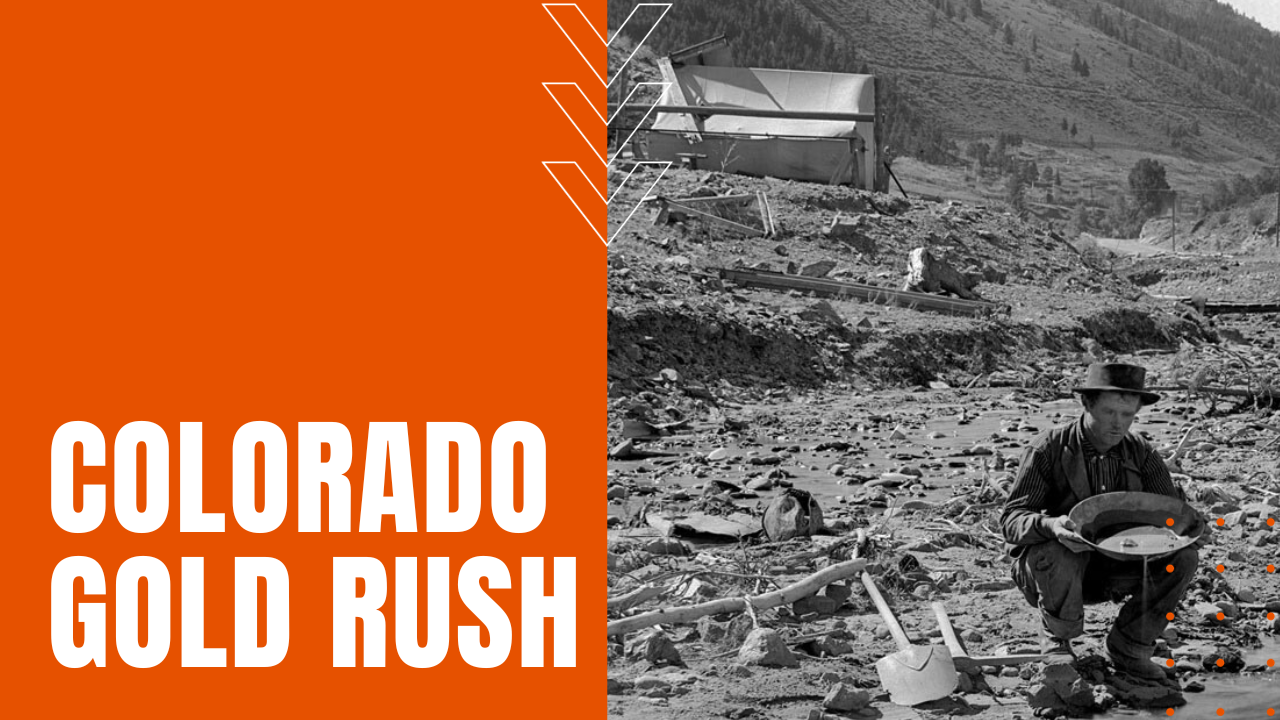The Colorado Gold Rush

After gold had been discovered in 1848 Sutter’s Mill California, several parties of westward-moving 49ers hauled small amounts of gold from Colorado’s South Platte River, failing to report their find for several years due to their eagerness to reach the gold fields of California. A decade later, after a Georgian 49er named William “Green” Russell learned about the Colorado strike from his Cherokee wife, Russell set out for the region with two brothers and six others in February of 1858, unearthing the first significant gold deposits when they panned Little Dry Creek in July.
Gold Rush Begins
When news of Russell’s strike reached newspapers back east, by 1859, the Colorado Gold Rush would attract more than 100,000 fortune seekers to what was then part of the Kansas and Nebraska Territory. Using the motto “Pikes Peak or Bust,” 59ers, as they were known, became the first significant non-native emigrants into the Rocky Mountain Region, creating the second largest mining excitement in U.S. history, at the same time founding early towns such as Denver, Boulder, Breckenridge and Central City, along with numerous smaller towns, leading to the creation of the Colorado Territory in 1861, followed by statehood in 1876.
A Human Stampede
After the initial teaser discoveries of 1858, the Colorado Gold Rush reached its peak the following year, thanks to George Jackson’s discovery of a substantial placer deposit near present-day Idaho Springs, followed by John Gregory’s discovery of lode gold near Black Hawk in the summer of 1859. Quickly renamed “Gregory Gulch,” Gregory’s initial discovery—soon to be the site of the Central City mining district— quickly became known as “The Richest Square Mile on Earth.” After placer deposits were largely exhausted by 1861, attempts at hydraulic lode mining—a highly-successful technique during the California Gold Rush—proved mostly unattainable due to the Rockies’ mountainous terrain and harsh winter conditions.
Corporate Mining Takes Over
After the end of the Civil War, however, eastern investors turned their attention to the region, in the form of in-situ and pit mining. By the 1870s, Colorado’s Gold Rush days were over, infusing some 375,000 ounces of gold into the American economy. As a secondary benefit, the infusion of capital investments and the arrival of the railroad opened a new age of growth and stability to the region, making the Colorado Gold Rush, a time of boom or bust, during the final years of a nation’s westward expansion.
